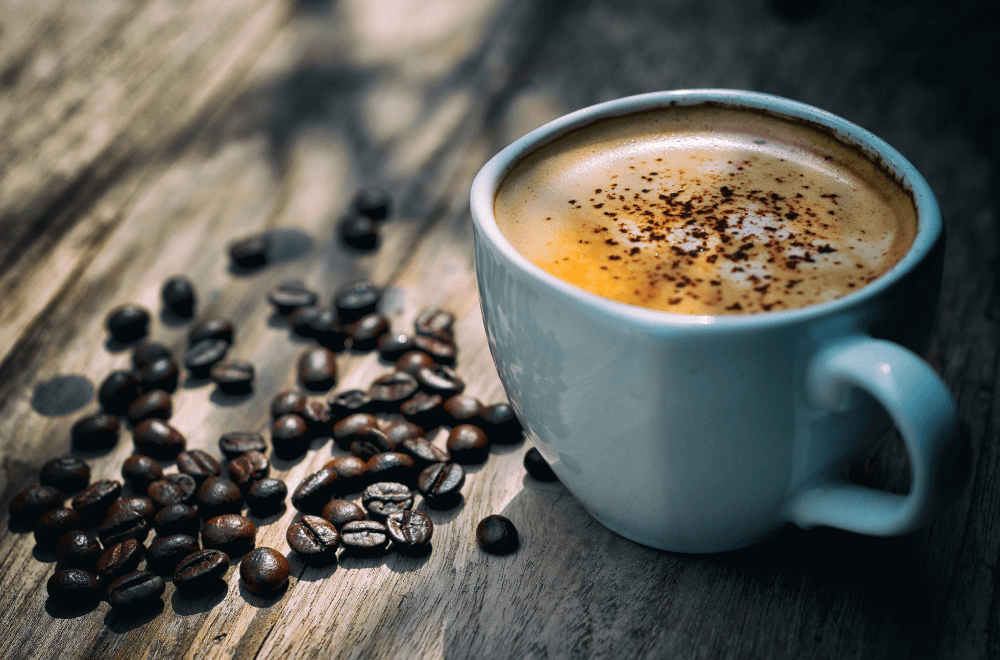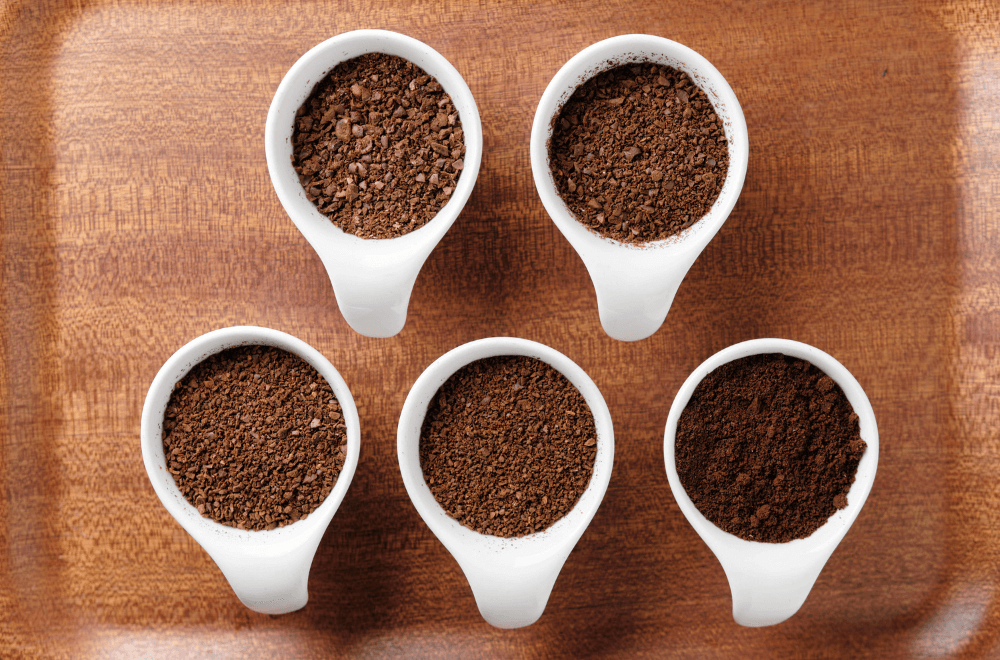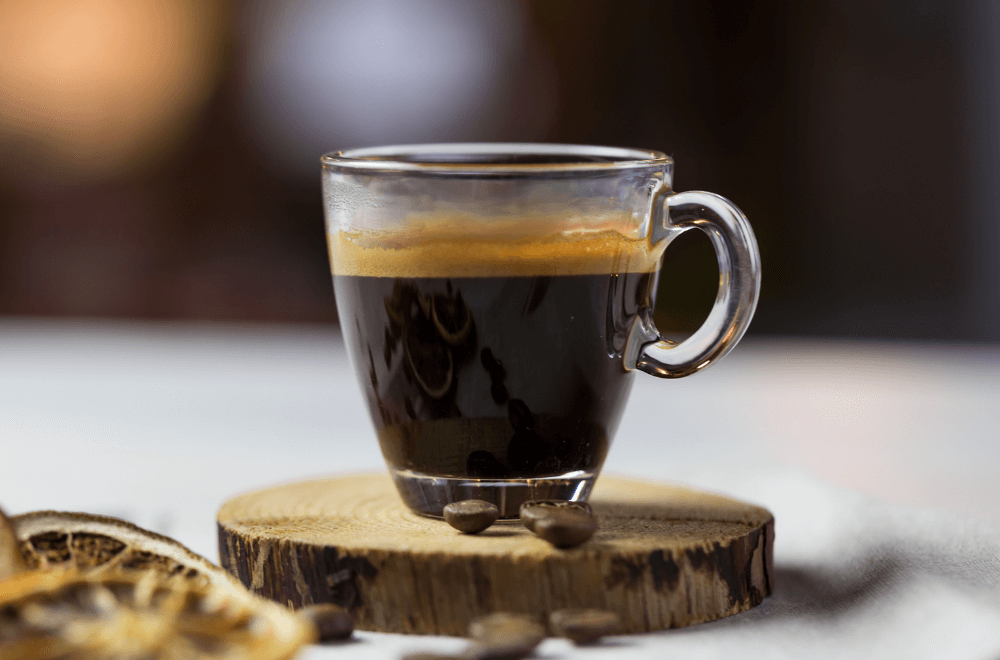If you are bugged by the question of ‘‘does coffee lose caffeine over time’, you have come to the right place. Read on to find out how your coffee change.

The answer to ‘does coffee lose caffeine over time’ is ‘no’. However, coffee does change, and that change can affect the taste greatly.
The caffeine content largely remains the same over time, but the coffee can lose its unique flavor and aromatic qualities if you leave it too long.
That rule can be applied to any type of coffee, with the taste of ‘old coffee’ far less palatable than the fresher alternative. However, if your primary worry is caffeine content, then worry not, as stale coffee doesn’t lose its caffeine. You might also be wondering, why does caffeine not affect me?
Why Does Coffee Lose Caffeine?
When it comes to caffeine levels within coffee, there are several factors that can affect your cup of hot coffee. However, how long it’s left out isn’t one of them.
Here are some of the factors responsible for the difference in the level of caffeine.
1. Saturation
The coffee grounds must be fully saturated in order to extract all the caffeine content available. Thus, the saturation time can greatly impact the amount of caffeine.
It may differ depending on the espresso or drip machine used, method of extraction, coffee brand, etc. However, it is clear that the amount of hot water used in the brewing process can affect the amount of caffeine within the drink.
2. Temperature
As mentioned above, hot water acts as a solvent and the medium to extract the caffeine from coffee grounds. The perfect temperature to enable the extraction is close to 95-105 degrees centigrade. Thus, a high temperature plays an important role in deciding how quickly caffeine is extracted from the beans.
If the water is not hot enough, the extraction may remain incomplete and in case of very hot water, too much extraction may take place and turn the beverage bitter. A cold brew coffee, on the other hand, may take hours to extract.
3. Time
With espresso, the extraction stops once the shot is pulled and coffee is served. However, in the case of drip coffee, the extraction process continue until the last drop of coffee drips into the cup placed under the filter. So, in this case time can affect the amount of caffeine in a cup.
However, this is only applicable when the coffee is being brewed with the drip coffee method. Once the coffee is in the cup, this doesn’t apply.
4. Grind

The quality of the grind can also impact how quickly caffeine is extracted from the coffee grounds, and this indirectly depends on your grinder. If you own a high-quality device like this capable of giving you a finer grind, this will enable faster extraction of caffeine. As the water gets to the surface area and saturates the grind, it results in a higher contact area.
Thus, if the grind is coarse, this will result in under-extraction of caffeine, and if the grind is too fine, this will cause over-extraction. Espresso uses pressurized water to extract caffeine from the coffee grounds, and this results in a higher content of caffeine than the drip method.
5. The Roast
The roasting process does actually affect the caffeine level of coffee beans. Despite its more intense flavor, darker roasts have slightly less caffeine. That is because they have been roasted for longer, so more caffeine has been burnt off.
Of course, the difference isn’t great, so you may not even notice when you choose one over another in your local coffee shop. On average, a cup of brewed light roast coffee will have about 60mg of caffeine. Whereas, a cup of dark roast will only have around 50mg of caffeine within it.
For the uninitiated amongst you, dark roasts are usually Robusta beans, and light are mostly Arabica.
Older Coffee And Caffeine Intake
Caffeine is a stable compound that doesn’t degrade quickly. And that’s true no matter what stage of the coffee-making process you’re working with. So relax, as your whole beans, ground and brewed coffee beans hold their caffeine content for a long time.
In terms of caffeine hitting your bloodstream after drinking a coffee, the process happens fairly quickly. It takes only about 45 minutes for 99% of the caffeine to enter your bloodstream and then it may take several hours for the caffeine to dissolve.
This is the same whether you are using fresh coffee beans that have been correctly stored in an airtight container, or older roasted coffee beans that are already past their expiration date. It’s unlikely that there is less caffeine in either of these options, but the former will taste much better.
Of course, if you’re looking to lessen the affects of caffeine, but don’t want to quit coffee, then there is always the option of decaf coffee. This decaffeinated option still has some traces of caffeine, but is the best coffee option for those of you reading this article who are looking for an alternative.
How Does Coffee Change Over Time?
We have established that coffee doesn’t lose its caffeine content over time, but that doesn’t mean that it doesn’t change. If you have ever had the misfortune of taking a sip out of a Starbucks cup that you accidentally left out for too long, you will know that the taste is far from the same when compared to a hot, freshly brewed pot of coffee.
Have you ever wondered why coffee tastes bad after the heat when it’s left out? To understand this, first let’s get a bit of the background – the coffee grounds are made of chemical compounds, oils, and acids.
Collectively known as solubles, they are responsible for giving that distinct flavor to coffee. These soluble are extracted during the brewing process to give that characteristic flavor and taste. Even after you pour the coffee, the oxidation process continues resulting in the solubles oxidizing and degrading.
This is perhaps why the baristas in fancy coffee houses always prepare a small batch of coffee at a time to retain the maximum flavor.
While your coffee will not die immediately after it’s pulled out of the machine, the flavors will change after some time. Some people often ask me ‘is it a good idea to use an espresso made in the morning to prepare a latte at midday’ and my answer is always ‘definitely not’.
Does Reheating Coffee Affect Caffeine Content?
The amount of caffeine molecules in your coffee won’t change after you reheat it. However, it’s unlikely that the taste will be of the same quality as it was when it was initially brewed. Your coffee has already gone through the process of cooling to room temperature, so the solubles have already degrated.
Although microwaving your coffee will likely affect the taste, as long as it’s done in a safe environment and the coffee is still relatively fresh, consuming it is unlikely to cause any issues. Obviously this changes if you have added milk or creamer, as they may already be gone stale.
Generally speaking, brewed coffee will start to go rancid after about 30 minutes. So, if you’re going to nuke it, you better not leave it too long. If it has been there for a while, you’ll be tasting some terrible coffee.
Does Espresso Have More Caffeine?
Let me explain like this – if regular coffee is a piece of cake then espresso is the cream on it. Yes, espresso is the mother of all coffee and there’s something about that bittersweet taste and the frothiness that sets it apart from all other beverages I have ever tasted.
You’ve clicked into this article because you’re interested in the caffeine levels of different types of coffee and how they change over time. With espresso, there is typically 63mg of caffeine per ounce. Whereas, regular coffee only has only 12 to 16mg per ounce.

Thus, ounce for ounce, espresso has more caffeine than your regular cup of joe. However, you are very unlikely to choose to drink just one ounce of your home-brewed arabica. Thus, with both brews, you will probably end up with roughly the same amount of caffeine consumed.
The caffeine count for both espresso and regular coffee also depends upon the type of brand, variety of beans, the roasting technique used, and the method in which it is prepared. Most coffee experts will agree that an espresso shot delivers a bigger jolt than any regular cup of coffee though.
A cup of black tea is thought to have about half the caffeine of a cup of coffee and a cup of green tea has approximately half the amount that is in the black tea. Thus, espresso trumps them for caffeine content too.
The smaller serving size of an espresso shot means that you drink it much faster than any regular cup of coffee that is sipped slowly. However, just like with all coffee, if you let the espresso sit outside for long, it will lose the essential flavors and turn into a bland and dead beverage.
How Does Espresso Change Over Time?
Just like other types of coffee, espresso doesn’t lose its caffeine content easily. However, it does lose its unique flavor and aromatic qualities. In the coffee world, this is often referred to as ‘dead espresso’ that is barely palatable.
As per the coffee traditionalists, the rich and frothy crema or foam on the top of the espresso is the most essential aspect of a perfect coffee. However, the biggest enemy of the espresso crema is time, and as they say, it waits for none!
The crema is formed by a dense and strong network of bubbles that break down as soon as the water evaporates. The emulsified lipids present in the espresso interact with the foam, and the coffee flavor starts deteriorating until it dies down completely.
What To Do With Old Coffee Grounds
We have talked a bit about how coffee doesn’t lose its caffeine content, but can end up tasting less than perfect when its past its shelf life. And if you choose not to use those old coffee beans, or are looking for a way to ensure that used beans don’t clog up the trash, you should know that there are several options.
For instance, old coffee grounds make for excellent compost. They work brilliantly as raw fertilizer and your worms will be delighted that you have chosen to dispose of them this way. We have even seen people use their old coffee grounds to fix furniture scratches, absorb odours and deter snails from their gardens.
The list of things to do with your old coffee grounds is endless. And if you are dispose of them before extraction, you now know that they will still have plenty of caffeine still within them.
